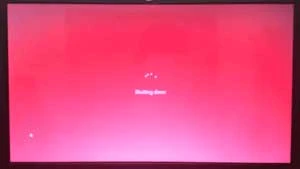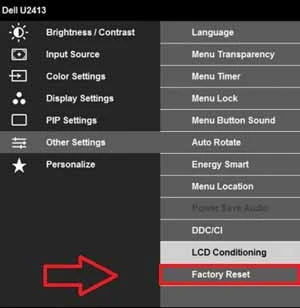by Malcolm Woods
In today's world where technology is in everyone's hands, it is safe to assume you are a daily user of laptops, and you already know pink screen on a laptop (or any electronic device) is not normal. Pink screen on laptop screens can be a common occurrence and is quite a frustrating one.
If you are facing this issue and trying to figure out how to fix the pink screen on laptop, we are here to help you understand what it is, why it happens, and how you can solve this problem. Read along!
Contents

Any technological device display uses RGB color scheme. RGB stands for red, green, blue colors, which are used to form every different color on our device screens. In the RGB scheme, pink color is formed when red is at maximum, blue is also at almost maximum, and green is somewhere in the mid-range.
A pink screen is simply a discoloration in the display, where pink occurs more prominently. It might occur as hues or shading, as lines or patches across the display, or throughout the whole display.

The pink screen may occur due to any of the following two major reasons: hardware problem and software problem. The easiest way to conclude is to plug your laptop into an external screen. If the pink screen persists, you can conclude it as a software problem. If not, it surely is a hardware problem.
There can be any (or multiple) reasons behind hardware-related problems. Such as defective monitor, flawed or loose wires/cables, faulty connection, drive malfunction, GPU temperature, out-of-warranty device, etc.
Similarly, software problems can be: infected by virus, unauthorized/ third party software, corrupted software, and applications, out of date graphic drivers.
How to fix the pink screen problem solely depends on where the problem is stemming from. Once you figure that out, you can proceed from there as needed. Here are a few ways you can try to solve the problem:

The age-old (and sarcastic) method of solution to any electronic device problem is "turning it off then on again." But in all honesty, it does end up working most of the time. So, start with the obvious one (if you haven't already, which is very unlikely).
You may have programs running in the background - your software and hardware may not be coordinating well.
Restarting your laptop will force the software in the background to shut down and coordinate to work better when the laptop is switched on again. This might help fix the issue of the pink screen. You can also try rebooting your laptop.
If there are any peripherals connected to the laptop, they might cause the laptop to lag and hamper coordination between software and hardware, causing the pink screen problem. So, you can try to disconnect any and all peripherals.
Make sure that your laptop is turned off when you are disconnecting the peripheral gadgets. If you use an external mouse or keyboard, check if only those are connected.
The problem might have stemmed from your graphics card. The solution to that is very straightforward; you need only to update your graphics card.
Visit the website of your computer manufacturer, and download the most recent/current driver for your adapter/device. You can run an outside showcase test on your laptop.
To manually update from your device itself, open the device manager. Find the option 'Display Adapter,' under which you will find the settings of graphics cards. If you right-click on it, a drop-down box will appear.
Choose the option 'Update Driver' from it, and proceed by choosing the option 'Search Automatically for Updated Driver Software.'
When this task is finished, you need to restart your laptop to see changes. If the problem was in the graphics card, the pink screen problem should be gone. If it persists, we need to look for other ways to solve it.

The pink screen might be an indicator of irritation/malfunction, which can very easily occur due to overheating. When your device hasn't been properly cleaned in a while, the fan collects dust.
And the fan is responsible for keeping the laptop cool when it is overworked. When it collects dust, it may not function properly, causing your GPU (Graphics Processing Unit) to get overheated.
You can open the bottom surface of the laptop and get the dust cleaned out very carefully and gently.
Since it is a delicate task, we recommend you to get this done by professionals if possible, to avoid the risk of damaging it.

When you click the power button and enter the power tab, you will find a menu button. Scroll through to find the factory settings, and reset the settings. Factory reset of the display to its original settings might be able to solve the pink screen problem.
Often, we end up downloading files and applications from unauthorized, unsafe third-party websites.
They might be virus-infected or simply incompatible with our software and/or hardware. These apps and files might be slowing things down. Often, these are the source of pink screen problems.
Uninstall and delete third-party or unauthorized seller-given applications and files. Sometimes uninstalling them is not all because they often leave auto-created temporary files, some of which may be hidden. Use authorized apps to track them down and delete them.
Besides, sometimes applications and software can take time to work and be quite problematic. If you have any such apps or software, you can try reinstalling them. Save your progress and unfinished works, and reinstall those software and application.
Restart your laptop once you are done tracking down, uninstalling, deleting, and reinstalling these software and apps accordingly. The chances are high that you will find your fix this way.

It is highly likely that the pink screen problem occurred due to hardware problems - the main problem might be a faulty display. Perhaps your device is old and suffered some damage due to overusing or hitting hard surfaces unexpectedly, etc.
The display is not something most of us can fix on our own, and trying to do so may only worsen the damage.
If you still have a warranty, take it to an authorized shop. Otherwise, you can consult with a professional mechanic and get it fixed.
If the problem is persistent or keeps coming back, we can agree that it is time for you to make an upgrade - replace/change the display part, or get a new laptop altogether.
The pink screen on a laptop or any other device can be annoying, as it disturbs optimal performances and hampers your workflow.
In some cases, it may also cause strain on your eyes. This problem should be fixed as soon as possible because if not tended, it might continue to increase and spread across your laptop screen (if it hadn't already).
We hope this article helped you figure out how to fix the pink screen on laptop, and you can easily fix yours if faced with this problem.
 |
 |
 |
 |

About Malcolm Woods
Malcolm Woods is a blogger who enjoys writing about technology and solar power. He has a passion for learning new things, and loves to share his knowledge with others. Malcolm is also an advocate for sustainable living, and believes that everyone has a responsibility to do their part in preserving our planet.
 |
 |
 |
 |
Go for the FREE Gifts. Or check out for free energy books from our best collection.
Remove Ad block to reveal all the secrets. Once done, hit a button below
 |
 |
 |
 |